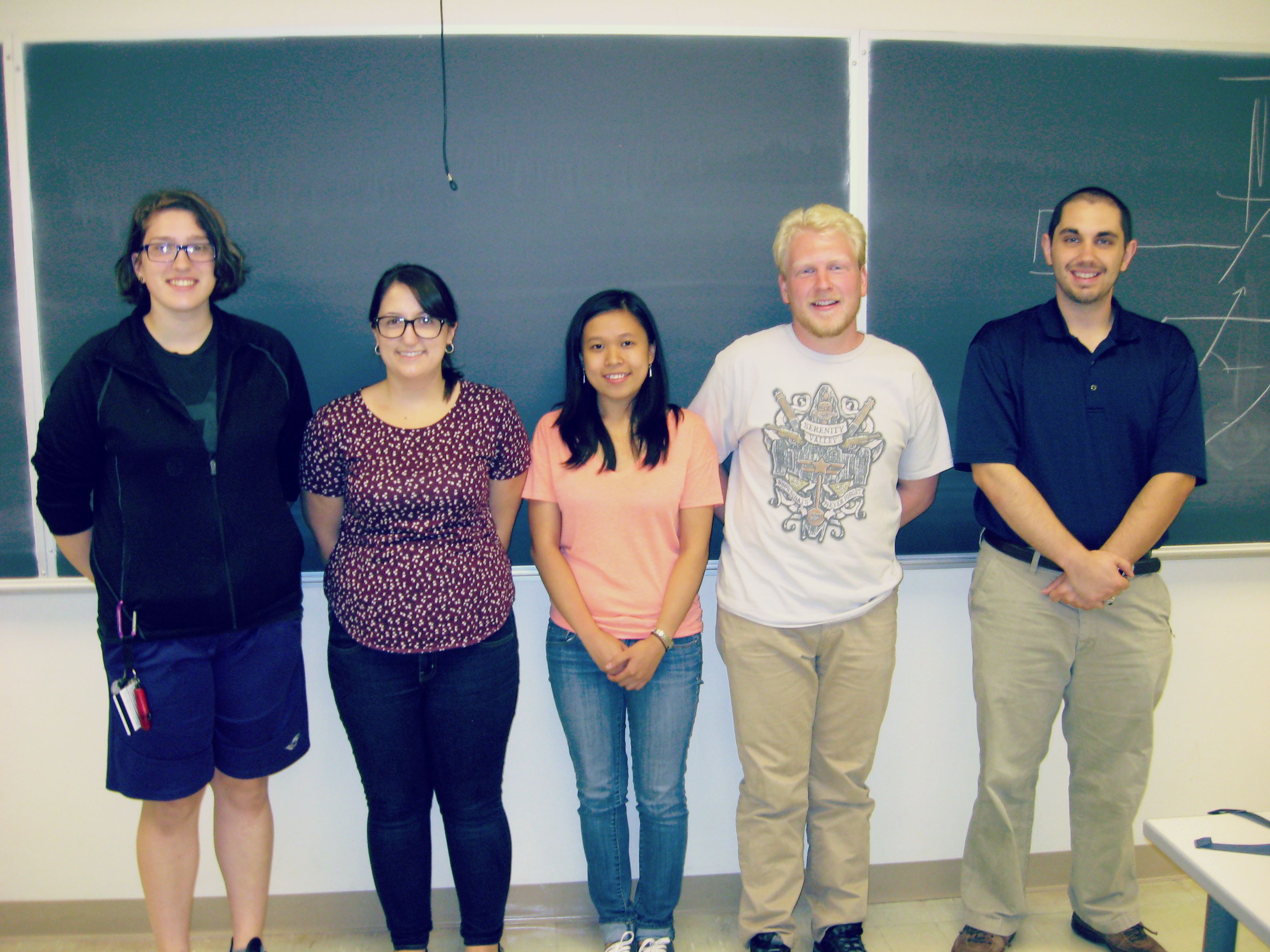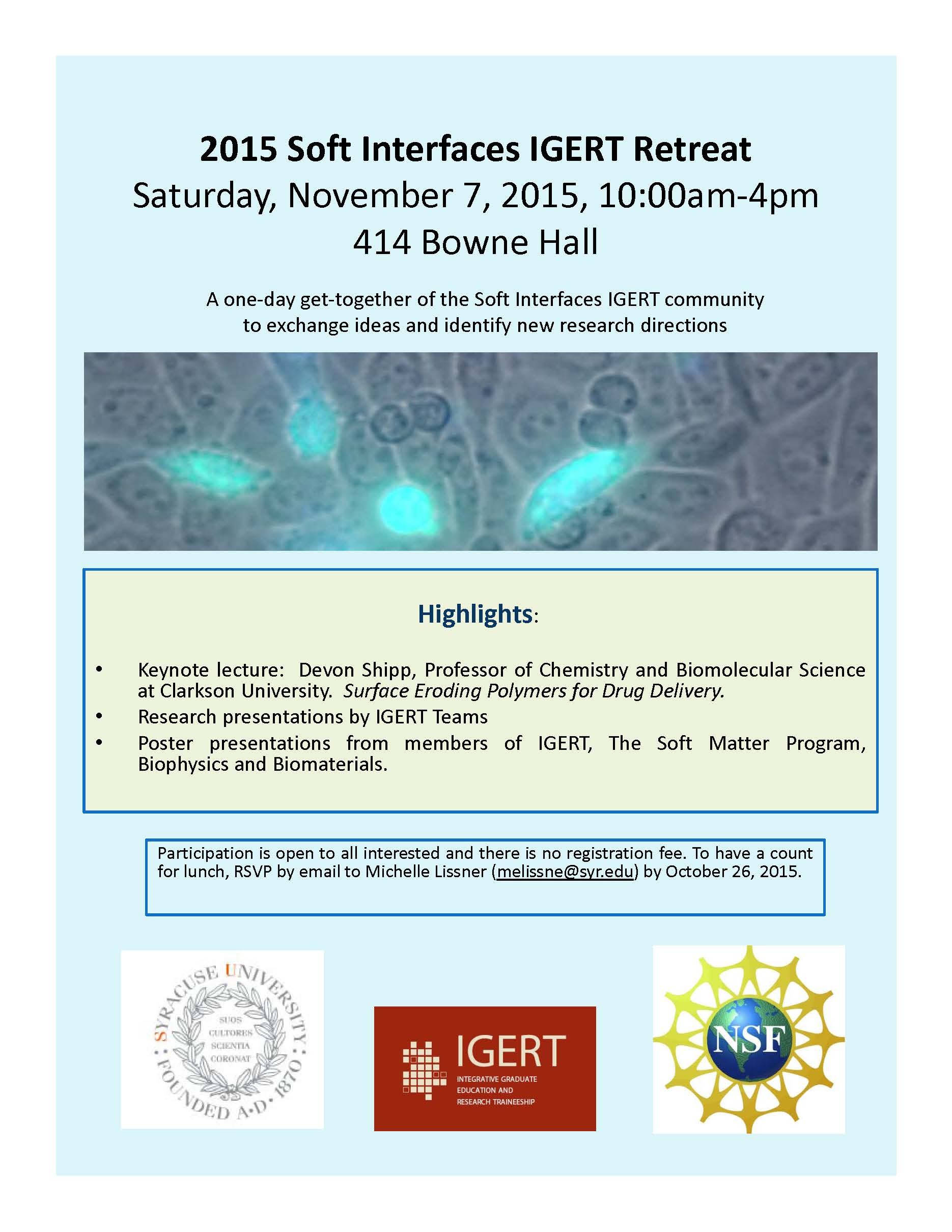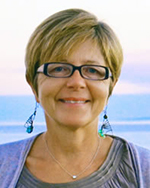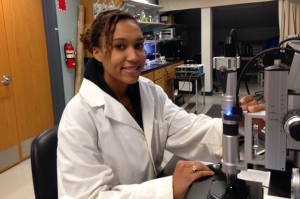Category Archives: Latest News
Poster winner!
On October 19th, former IGERT fellow, Tiffany Dunston’s poster presentation won 3rd place at the 14th Upstate New York NMR  Conference and Structural Biology Symposium.
Conference and Structural Biology Symposium.
2015 IGERT Fellows
Please help us in welcoming our 2015 IGERT Fellows to the group!
Monica, Jessica, Plansky, Bradley and Alex

Trainees Czajkowski and Passucci attend 2015 Boulder School for Condensed Matter and Material Physics
Trainees Michael Czajkowski and Giuseppe Passucci ATTEND THE 2015 BOULDER SCHOOL FOR CONDENSED MATTER AND MATERIAL PHYSICS
Trainee Adam Patch attends the 2015 Soft Matter School at UMass Amherst
For the full story, click on the link below:
http://blogs.umass.edu/softmatter/soft-solids-and-complex-fluids-2015/
2015 IGERT Retreat – Save the date!
Our IGERT Retreat is scheduled for Saturday, November 7, 2015.
Please make sure to hold this date on your calendars!
IGERT Fellows, Advisors and Associates are all expected to participate in the Retreat.
Former Fellows are also encouraged to join us!
Cristina Marchetti receives Simons Foundation funding
Simons Foundation Funds Physics
Four professors in the College of Arts and Sciences have received major grant awards from the Simons Foundation, a global organization advancing research in basic science and mathematics.
M. Cristina Marchetti, the William R. Kenan Professor of Physics, is the recipient of a targeted grant from the Mathematical Modeling of Living Systems program. She will use her three-year award, valued at $473,000, to study models of collective cell migration and sorting.
“These achievements are remarkable for not only the college, but also the University,” says Karin Ruhlandt, dean of Arts and Sciences and Distinguished Professor of Chemistry. “For the Simons Foundation to recognize four different professors across two departments, all at once, is exceedingly rare. Their awards signal a culture of scholarly excellence on campus.”
M. Cristina Marchetti
In addition to being a Kenan Professor, Marchetti is associate director of the Syracuse Biomaterials Institute and a member of the University’s Soft Matter Program. Her research involves the structure and rheology of active suspensions and gels, cell cytoskeletons and motility, bacteria swarms and non-equilibrium phase transitions.
“I’m interested in learning how biological matter converts energy to movement,” says Marchetti, who was awarded a 2013-14 Simons Fellowship to organize an international workshop at the University of California, Santa Barbara. “My group uses theory and computation to investigate the rich dynamics of a broad range of systems—from cytoskeletons, cells and tissues to synthetic microswimmers.”
Specifically, Marchetti will develop mathematical models to explain classes of experimental results. “We’re interested in testing theoretical ideas and expanding their reach. We plan to survey what research has been done thus far, to address central broad questions and to identify areas for future breakthroughs,” she adds.
Alan Middleton, professor and chair of physics, is proud of Marchetti’s accomplishment. “This award breaks new theoretical ground by developing models that explain data and motivate new classes of experiments. It speaks to the importance we place on theory-experiment collaboration at the University,” he says.
Former IGERT Fellow – Ariel Ash-Shakoor
Doctoral student Ariel Ash-Shakoor is helping create biomaterials that are more biocompatible, better able to interact with human cells that are damaged or diseased.
As a research assistant in the Syracuse Biomaterials Institute (SBI), the third-year bioengineering graduate was given a strong nod of encouragement to continue through a National Science Foundation Graduate Research Fellowship (NSF GRFP).
NSF GRFP is open to early-stage graduate students and graduating seniors in science, technology, engineering and mathematics disciplines; social science; and behavioral science fields.
Ash-Shakoor engineers biomaterials to understand the effects of chemistry, topography and stiffness on cell behavior with the biomaterial, with specific areas of wound healing and stem cell applications.
“For example, if there is an implant in the body and if it’s rough or positively charged or it’s too soft, then the cells might not like it and not want to stick to it,” Ash-Shakoor says. “So that’s what I want to understand: what’s more important, the fact that it’s too soft? Or is it the fact that it’s too rough, or too smooth, or a positive charge, or a negative charge?”
Ash-Shakoor, whose mentors are Patrick Mather, the Milton and Ann Stevenson Professor of Biomedical and Chemical Engineering and SBI director, and Associate Professor James Henderson, is one of three Syracuse University students in 2014 to win the NSF Graduate Research Fellowship.
The other winners are Kelsey John, a Ph.D. student in cultural foundations of education, and David Wilson ’14, a graduate in biomedical engineering who began a Ph.D. program at Johns Hopkins University this fall.
$32,000 annual stipend
Fellows receive a three-year annual stipend of $32,000, along with a $12,000 cost of education allowance for tuition and fees, and have opportunities for international research and professional development, while conducting their research at any U.S. graduate institution.
Ash-Shakoor applied for the fellowship as her time as a National Science Foundation Integrative Graduate Education and Research Traineeship (IGERT) fellow was ending. “It allows you creative freedom, and so that’s why I think it’s appealing to me and many other students,” says Ash-Shakoor, who also appreciated the possibility of international research. “You get to design or pitch your own project or whatever you’ve been working on previously.”
Original Source: http://news.syr.edu/nsf-fellows-given-creative-freedom-to-explore-varied-topics-77378/



